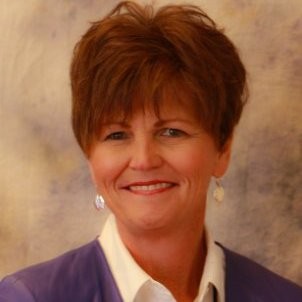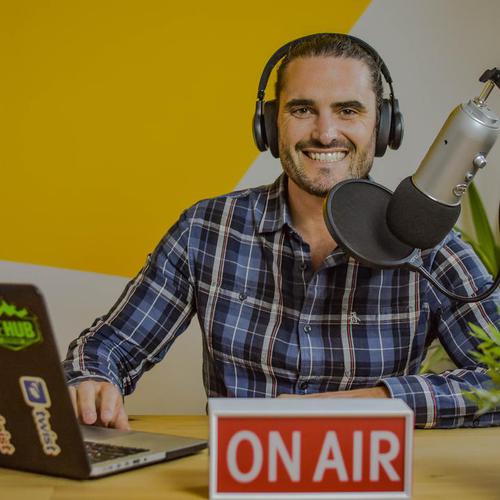Banks have been in the middle of digital transformation for a long time, but it’s all been focused on the customer experience.
Internally, financial institutions have been slower to roll out changes for employees.
Elements Financial is a Credit Union that serves members all around the world. Lisa Schlehuber has been the CEO for more than 15 years. Before COVID-19, most employees worked in branches or at the main office. Now, more than 90% are remote.
Collaborating in a new environment
Lisa says that with a switch to digital, teams are doing 1:1s more often and trying to check in with each other. They are also experimenting with flexible work hours to allow people to optimize their own time and energy.
The thing they are missing the most is the drive-bys. The team is used to just asking “What’s going on?” to random encounters and pulling people into conversations quickly.
When they started the shift to remote, they set up a lot of meetings, but like many others, things have slowed down and they have been able to back off.
Focus in a digital workplace
Lisa finds a lot of freedom to be able to completely turn off notifications and really focus on her most intensive work. However, others are used to being responsive all the time, and want as many notifications as possible. They are trying to find solutions that work for everyone and give people agency over their choices.
Lisa said, “People function differently, and we need to allow them to be comfortable and function in a way they’re going to be the most productive.”
Bridging miscommunication
Lisa said the shift to digital has forced the team to work hard at being open, honest, and respectful in how they communicate. Rather than getting offended at perceived interpretations, she encourages her team to ask good questions, and get on a video or phone call when the meaning isn’t clear.
Today our guest is Lisa Schlehuber. She’s the CEO at Elements Financial. Hi, Lisa. How are you today?
Good morning, Neil. Glad to be here.
It’s always a pleasure to have you here. I want you just to start off telling us a little bit about yourself and about Elements.
Elements Financial is a credit union here in the Indianapolis area. We have been around since 1930. We serve our members across the US in all 50 states as well as 50 foreign countries. We got our start as the credit union for Eli Lilly and company here in Indianapolis, and now we work with over 150 other organizations in providing them financial wellness, education tools and products.
I think you’re the first person we’ve had on from really the financial services world, especially a credit union. So give us the lay of the land when it comes to your industry. How much digital transformation Have you seen in the last 10 years, let’s say?
Think about this. I might ask you a question, Neil. When did you go into a bank or credit union branch last?
It’s been some time. It’s been a while.
It’s been some time, right? Because most of us actually bank on our phones these days. Digital transformation has been within financial services for some time, and we’re all trying to figure out how to connect with people in the best way. We at Elements have been working on a digital transformation for really, I’ll say high focus for over five years and making sure that an organization of our size can compete with the big players in our sphere. And a lot of us have to realize that it’s the big retail places that are driving people’s expectations in the digital space. Again, how do we make our experience feel as seamless as theirs are. So it’s how we work with each other, but also how we interact, ultimately, with our end users who we call members, our members of the credit union.
So I think one thing we see a lot in digital transformation is that it’s usually pushed by the customer experience. You have to keep up with your competitors. You have to keep up with other people you didn’t think were competitors at one point, but now they are. We’d like to see, where does that overlap with the employee experience? And at what point did your digital transformation realize, hey, we got all these great products that our customers are facing, but internally, we’re still working like it’s 1980. What was that experience like for you?
I’ve been at the credit union for 15 years, and when I first started at the credit union, we were still using green screens. You’re probably too young to remember what those were but it was fascinating to see how we go. And again, an organization our size, we rely on a lot of external partners. So we have a lot of multiple systems that have to interface effectively together for us to be efficient for our members to use. The only way we can get members comfortable with that is we employees have to be comfortable with it. So we have had to migrate our own mindset away from this is the way we’ve always done things to, oh, here’s something new. Here’s a new tool. Let’s go out. Let’s really explore how it works, how it can work, why it’s good, how does it compare to some of the things that are out there in the environment, and how do we explain and teach our members to do that. Again, we have to be the first ones willing to try and explore and punch those buttons and make sure we’re not frightened by new technology. And given that when we’re positive about it, we can then communicate that message on to our members.
Let’s get specific for a while. When it comes to some of the tools that you guys have used, and we’ve all gone through those times when you think something’s going to be great and it doesn’t work out or you think everyone is great but just no one adopts it for whatever reason. What have been some of the success stories that you faced, let’s just take when it comes to collaboration, when it comes to your employees connecting with each other about the work that needs to be done. What are some ways you found successes and things that you thought would be successes that didn’t end up being so?
Elements, we have 180 employees, and the majority of them prior to March of this year, actually worked on site. Now for an organization our size, we did have employees already in seven different states. These were individuals that worked with us and then life circumstances were taking them somewhere else. And we’re like, whoa, wait a minute, you’re a great employee, we’d love for you to stay. And let’s see how we can work it out. So we’ve had some experience with working with remote employees for some time now, small, limited, individual numbers. But that helped us get ready as we were moving into this new COVID experience. So what we’ve tried to do is make sure we stay connected. Our culture is very collaborative, and very much we’re in this together. And one of the biggest challenges we have is how do we continue that in this real remote when we have 90% of our workforce working from home? So the things that we’ve tried to do would be how do we stay and communicate, continue to communicate in the best ways possible. So we’ve moved from monthly one on one discussions to weekly. And sometimes those go from the hour scheduled to 30 minutes or maybe to a 10-minute drive by as one of our executives is calling it just to touch base with people to make sure we understand what’s going on with them. The other thing we’ve tried to do is really set some boundaries as far as our expectations of how we work with people. I tend to be a night owl. So if I’m sending emails or text messages at midnight, or two o’clock in the morning, I don’t expect people to respond to me right then. But I had to give them permission not to feel like they had to, oh my God, I got up in the middle of the night. I see Lisa sent me something. I need to think about this. No, that’s not the fact. So setting boundaries has really helped us manage through this process, but it’s really about trying different things to stay connected.
I want to touch on that specifically because I know that’s an issue for a lot of people that we work at different hours, we’re working this asynchronous model. Was it as easy as telling people, hey, don’t worry about it, you can reply later? Because when it comes from the CEO, they still think okay, yeah, sure. What was that process like to really convince people? No, I’m actually serious. This is true. I do not expect the response immediately. How did you actually work that out?
Yeah, it took some time because, again, everyone wants to do well. And we, again, have a culture of service, service to each other, service to our members. And it’s so important that we get you the right answer right away. And so it has been over time and that’s even something that happened over the 15 years while I’ve been here. People have gotten more comfortable with the fact that, yes, just because I have a title or someone has a title, you don’t need to knee jerk react and just respond without thinking it through and also taking the time. It took time, but it took conversations like this to say, it’s okay. Just get back to me in a reasonable amount. I have found myself, I’ve even tried now to put either in the subject line or maybe in the first line or somewhere saying, hey, this is not urgent. So what can I control, even when I’m sending messages to people that I’m not conveying for when we see each other through body language or whatever, oh, I’ll get around to it whenever. It’s something that you have to be a little more thoughtful of.
You said your culture is collaborative before, which is a great thing to do and to practice. How do you feel like that has changed in the last few months in terms of when I think about people in the workspace physically together, if they’re collaborative, they’re talking a lot, they’re taking breaks a lot. You’re having a lot of meetings, some impromptu meetings, really just doing a lot of things together. What have been some ways you’ve been able to take that collaborative culture and transition it digitally?
I think technology helps us with that because doing Teams calls, Zooms calls, whatever brand you happen to be using, makes it easier because I do think being able to see each other and to see multiple people at the same time is helping. I’ll give you one example. I just had a virtual lunch with our new employees. Because normally every three months I would take out the new employees to pick their brain. They’ve been here three months, they now know where the bathroom is. They know how to use most of the systems, they’re feeling pretty good. It was fascinating because in this situation, there were five of them that were with us and it was myself and the head of our HR team. Three of them I think were hired two weeks before we went into quarantine. What a weird time for them. But their stories and their feedback that were provided around how the willingness of our employees to get on, whether a FaceTime call, a Teams call, even a phone call or an email to help walk them through what their questions were, that willingness still shines through. And I think that’s the key piece of our culture that continues to play out in this is we’re here to help each other. And because it was so strong in our culture to begin with, the remote aspect, the digital aspect has not hurt that. But we still have to be more thoughtful about it.
Yeah, that makes sense. So that willingness to be helpful transcends whether or not it’s physical or it’s digital in that way. But obviously digital does present some challenges if you’re used to physical collaboration. So talk about some things you guys are facing. What are some things you’ve had to find solutions for and are still finding solutions for?
It’s interesting. I was in a call this morning. So I just also love this question out to them, because I figured you’d probably ask me. I think the biggest piece that people are missing is those drive bys that you were talking about. Just the quick, hey, I got a question. What do you think? Let’s get an answer. Let’s move on. Now, you have to be more thoughtful around, do you have a few minutes to talk? The few minutes now turned into 30 minutes, how do you do this? Oh, am I supposed to be on another meeting? Are you setting up too many meetings? And I think that’s the challenge that we have just from that standpoint. It’s, again, us getting used to interacting more in this digital space and understanding that at times, we still need downtime. We need think time. We need people to stop bugging us and give us time to actually get the projects done and so how do we work through that. The other real challenge that we have had is, again, technology doesn’t always work. Sometimes personal internets go down, sometimes our core systems have problems. That builds a level of frustration that I don’t think we had really thought about. It’s one thing when you have a handful of your employees that are remote, but when it’s 90%, and your system goes down, and you can’t reassure them face to face, it is tough. We’ve had that happen to us. I think we’ve got workarounds and we’ve got business continuity plans, where we can do a lot of things manually, but there is a frustration level to really living 100% in this digital technology space.
Yeah, that makes sense. I find it fascinating that you talk about you need that think time, you need time to be without distractions that are there. And digital offers that because you can totally shut down everything and just focus on one piece of work or anything like that. Yet it’s also extremely hard because sometimes you have all these notifications going everywhere, you have somebody pinging you, and if you allow it, it’s often more difficult in a digital environment to focus on things. How have you guys respond to that?
I think that’s a personal thing that people have to find the right balance. So for me, I turn off all the noises, the notifications, all that type of thing so I can control my time. Others can’t stand that. They want the emails coming at them and saying, hey, this is going on. You’ve got this meeting in 10 minutes. You’ve got this. For me personally, that just muddles my mind and it makes me jump from one thing to too many. So we have really encouraged people to find what works for them because we are all wired different. We can’t just say we’re turning this off from the root, if you will, of the system because for some that is really important. We have an internal news distribution or newsletter. It’s not really a newsletter because it’s short and sweet. We send it out usually twice a week on things that you need to do. Here’s training you need to do or somebody got promoted, those types of things. Originally, in the system we had, it would send out notices to everyone when that notice would get posted in our intranet. When we upgraded, for some reason, that notification process went away. Oh my gosh, I thought it was fabulous because I couldn’t stand it. But other people, it was like the world had come to an end. So that was one of those a-ha moments that having flexibility, having options is good in this digital space, because, again, people function differently, and we need to allow them to be comfortable and function in a way they’re going to be the most productive.
Absolutely. I totally agree. The ability to have options, to have agency over those options and to say, if you need those notifications to stay focused, then here they are, and if you need them to go away, then here it is, like you can do that. And even when it comes to as we build back into a hybrid model, or if we’re back in offices, we need those options, too. I think people are going to say, yeah, I want to work from home for this amount of time, or I want to work from an office that’s closer to my home or something like that. We need to find those options, and digital offers that ability to have those options and agency available to people.
Absolutely.
Lisa, what I want to close with here is talking about what it means to you to reach what we’ll call level five collaboration status. So when I talk about level five, it’s like, one level beyond where you think you can get. So if you look into the future and see, yeah, if you as an organization continue on this digital journey, continue to improve and iterate on what you’re doing, where do you see the future going? What is it going to look like for a fully digital company to collaborate at a high level?
I think the most important type issue that we all need to continue to work on, whether it’s face to face or digitally is open, honest, and respectful communication. Again, how do we do that? Today, there are so many ways, texting, emailing, being on a video call doing those types of things, but they are still different from being in that face to face because you can’t see the body language, you don’t have an opportunity to really ask those clarifying questions all the time. It’s really where I think people need to get comfortable in interacting with each other by asking good questions and not being offended by someone else asking them because listening skills are so critical in this space. You can send off an email that is perfect in your mind and the recipient can get a totally different response. They read it and it’s like black and white. We need to make sure that we are being clear and we give people the opportunity to really clarify what you mean. I had a Lego in my office that says, be bright, be brief, be gone. So for me, communication to me is give me the facts. Let me make a decision. Let’s move on. We have others, again, that have the style of encyclopedia version. How do you find that balance? I think that’s where using the right tools, whatever they happen to be, to allow you to communicate in multiple ways, when needed, the chat functions now and Outlook and different other systems really make it great because if you do need to talk with the person, if one of our members needs to talk to us, they can get that instant service. How do we move that into this 24/7 expectation where it doesn’t put too much burden on our employees? We have to find balance. And I do think this remote working is proving to people that they can slow down a little bit, not from a productivity standpoint, but I think our lives have gotten so busy, got to get to work, got to get here, got to get there, doing all these things. Now that we’re stuck in one place, it’s giving us a little bit of time to reevaluate really what’s the most important and people need and hopefully are learning how to put some parameters around what’s work time and what’s me time because me time, family time, etc. is going to continue to be very important.
Lisa, these are great answers. I love the fact of when we think about the advanced version of digital workplaces, usually what it means is we have to get better as humans, like we’re not trying to be more robotic. We actually have to write better, we have to be more empathetic, we have to listen better, we have to be more conscious of the time that we spend. So it’s totally in line with all the stuff we’ve been thinking about. This is a great way to look forward and get excited about what’s coming up next.
Absolutely. Glad to chat with you today.
Yeah, thanks, Lisa. It’s been great. If people want to learn more about you, about Elements, about the kinds of things you’re doing, is there any place they can go for that?
Absolutely. Go to our website, elements.org. And you can learn all about us. That’d be great.
Excellent. Well, thanks so much for being on the show. We look forward to connecting with you again soon.
All right, Neil. Thanks for your time.
Lisa Schlehuber is the CEO of Elements Financial Credit Union.












